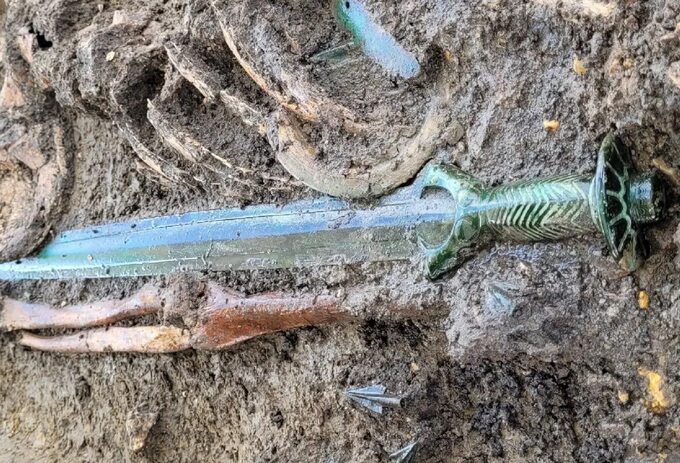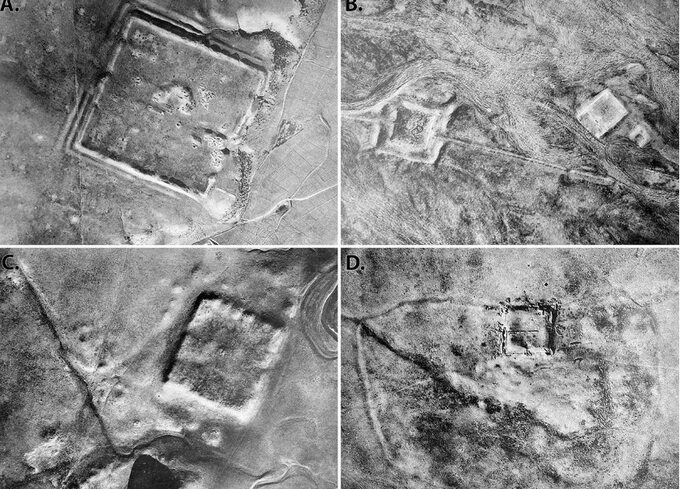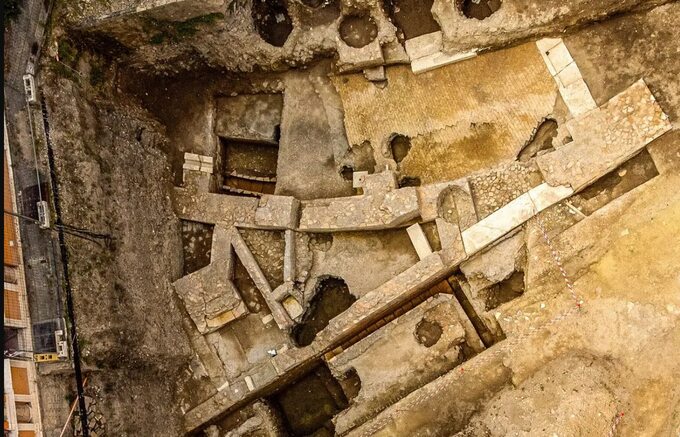A well-preserved sword or the grave of a Scythian warrior – these are just some of the spectacular archaeological finds that have enriched our knowledge of past centuries.
Tomb of Cerberus in Giuliano
The Tomb of Cerberus takes its name from frescoes depicting the mythical three-headed dog. The tomb is located in Giuliano Comuna, Campania, Italy. Kerberus, according to Greek mythology, guarded the entrance to the underworld and prevented the dead from leaving. The tomb is in very good condition, it is about 2000 years old and dates back to the time of Republican Rome. It was discovered while working on the modernization of the city's water supply network.
Bronze Age sword

In the Bavarian city of Nordlingen, archaeologists have discovered a Bronze Age sword, about 3000 years old. The artifact is almost intact. A unique sword was found in a hill that has not yet been explored. Other items and remains belonging to a woman, a man and a child were also found in this place. Even finding an intact burial ground in this part of Germany can be considered a sensation, as virtually all such sites have been looted in the past or opened at the latest in the 19th century.
Neanderthal rock paintings

A study conducted by a group of scientists led by Jean-Claude Marquet of the University of Tours in France has confirmed that the rock paintings found on a cave wall in France were made by Neanderthals. This is the oldest known example of this type of art and further evidence that Homo Neanderthals were a more intelligent and more skilled species than previously thought.
Solar system in an Egyptian temple
In the Khnum temple in Esna, Egypt, archaeologists discovered reliefs and paintings depicting several planets and constellations of zodiac signs. You can see there, among others: Jupiter, Saturn and Mars, as well as the stars and constellations that were used to measure time in ancient times. These paintings are about 2000 years old.
Roman forts in spy photos

Declassified photos from the 1960s and 1970s, the Cold War era, have allowed the identification of the remains of nearly 400 ancient Roman forts. The Roman forts that the researchers identified in the photographs are located in present-day Syria and Iraq. The location of the forts contradicts the thesis that they protected the eastern border of the Roman state. They were built not only along the north-south axis, but primarily on the east-west axis, indicating that they did not represent a barrier, but marked a trade route. The soldiers stationed in the forts were responsible not only for guarding the borders, but also, above all, for the surveillance and protection of travelers and caravans.
Images of the people of the Tartesso culture
Bas-reliefs depicting human heads were discovered in Casa del Turuniuelo in Spain. They were made by representatives of the mysterious Tartesso culture. These are the first human images from this cultural circle. Until now, not much is known about its representatives, customs and beliefs. Until recently, it was believed that they did not form a human likeness. The figures were made in the 5th century BC
Theater of Nero

Until recently, information about Nero's theater (Theatrum Neronis), where the emperor performed his plays, was known only from the works of historians such as Pliny the Elder, Tacitus and Suetonius. It was here that Nero had to go before performances in the Theater of Pompey, one of the largest Roman theaters, built in the 1st century BC. In July 2023, researchers confirmed that their remains were Nero's former theater. The site is located in the courtyard of the existing Renaissance Palazzo della Rovere.
A hidden Mayan city
Archaeologists from Mexico's National Institute of Anthropology and History have announced that they have discovered a previously unknown Mayan city in the forests of the Balamcu Ecological Reserve. The city was named Okomtun (meaning “stone pillar”) because of the many cylindrical stone pillars that were found on its territory. The city was inhabited in 600-800 BC (approximately).
A ceremonial sword from Japan
The 2.3-meter-long sword was discovered by archaeologists from the Japan Cultural Property Research Center in Nara. A powerful sword was discovered during excavations at Tomiomaruyama's tomb in Nara, Japan. The sword has a wavy, snake-like blade and was probably never used in battle, as it was used for ceremonial purposes. It is the largest object of its kind ever discovered in Japan.
The grave of the Scythian warrior
The grave of the Scythian warrior was discovered in Sobietsin near Yaroslavl (Podkarpack Voivodeship). This is a unique discovery not only in Poland, but in the whole region. The grave is about 2.5 thousand years old. The Scythians were a nomadic people who dominated vast territories from Western Asia to Eastern Europe in the 1st century BC. to VIII-IV centuries. At the turn of the 7th-6th centuries, the Scythians settled in the present-day south-eastern Poland. They even built a fortress in Chotiniek, near today's Yaroslavl. His discovery caused a great sensation in Poland years ago. The Scythian grave from Sobiecin is the first burial from this culture known in Poland.
Also read:
Ten mysterious places that have fascinated people for centuriesAlso read:
They searched and became legends. Six places that never existedAlso read:
A huge statue of Lamasu was discovered in Iraq. It is 2700 years oldAlso read:
A lost painting by Sandro Botticelli has been found. He was in a private house
(translate tags)archaeology
